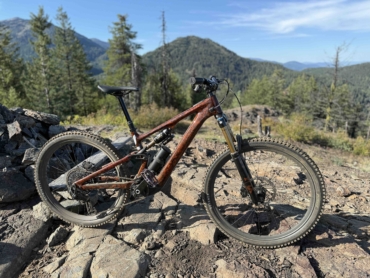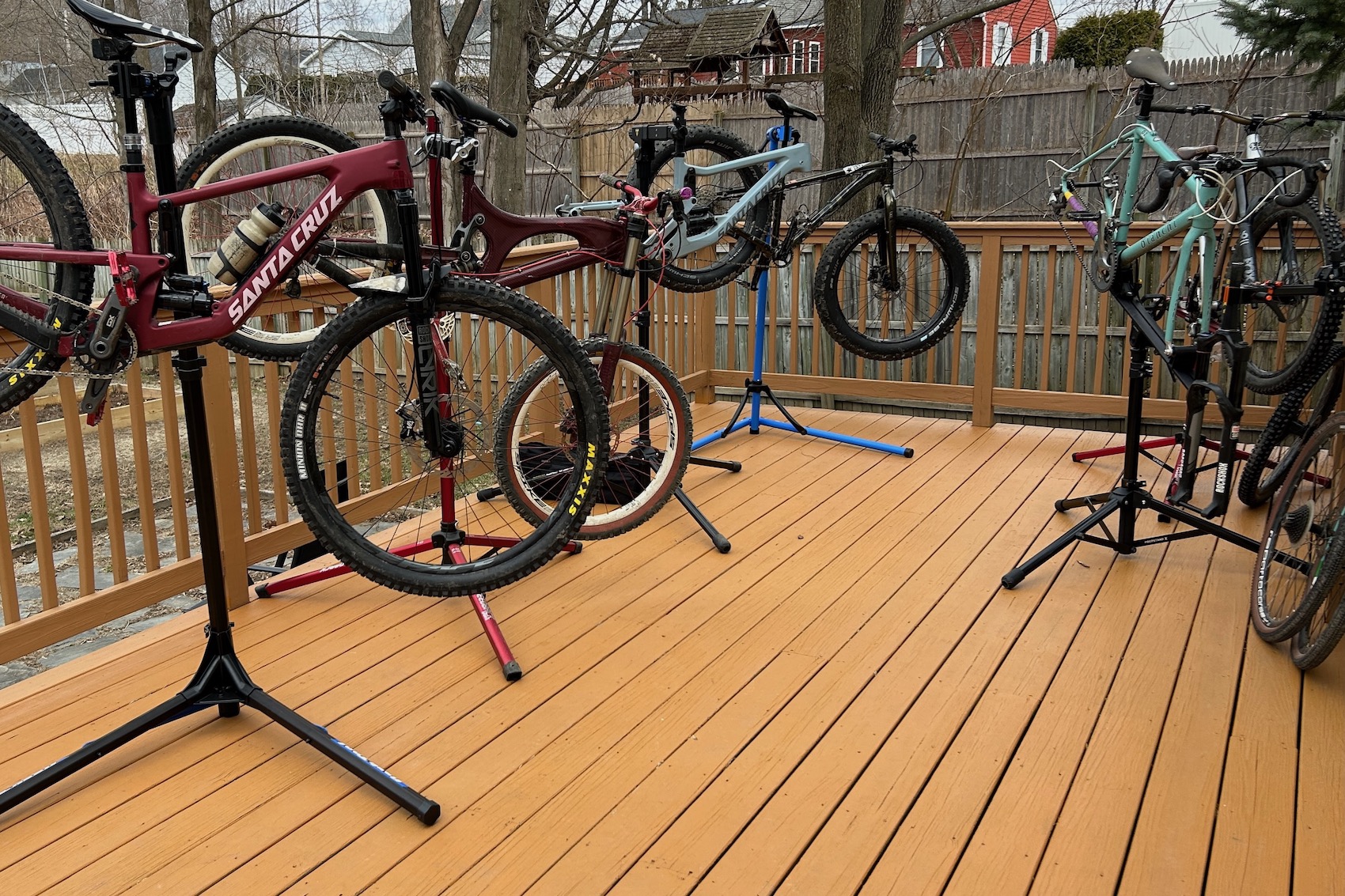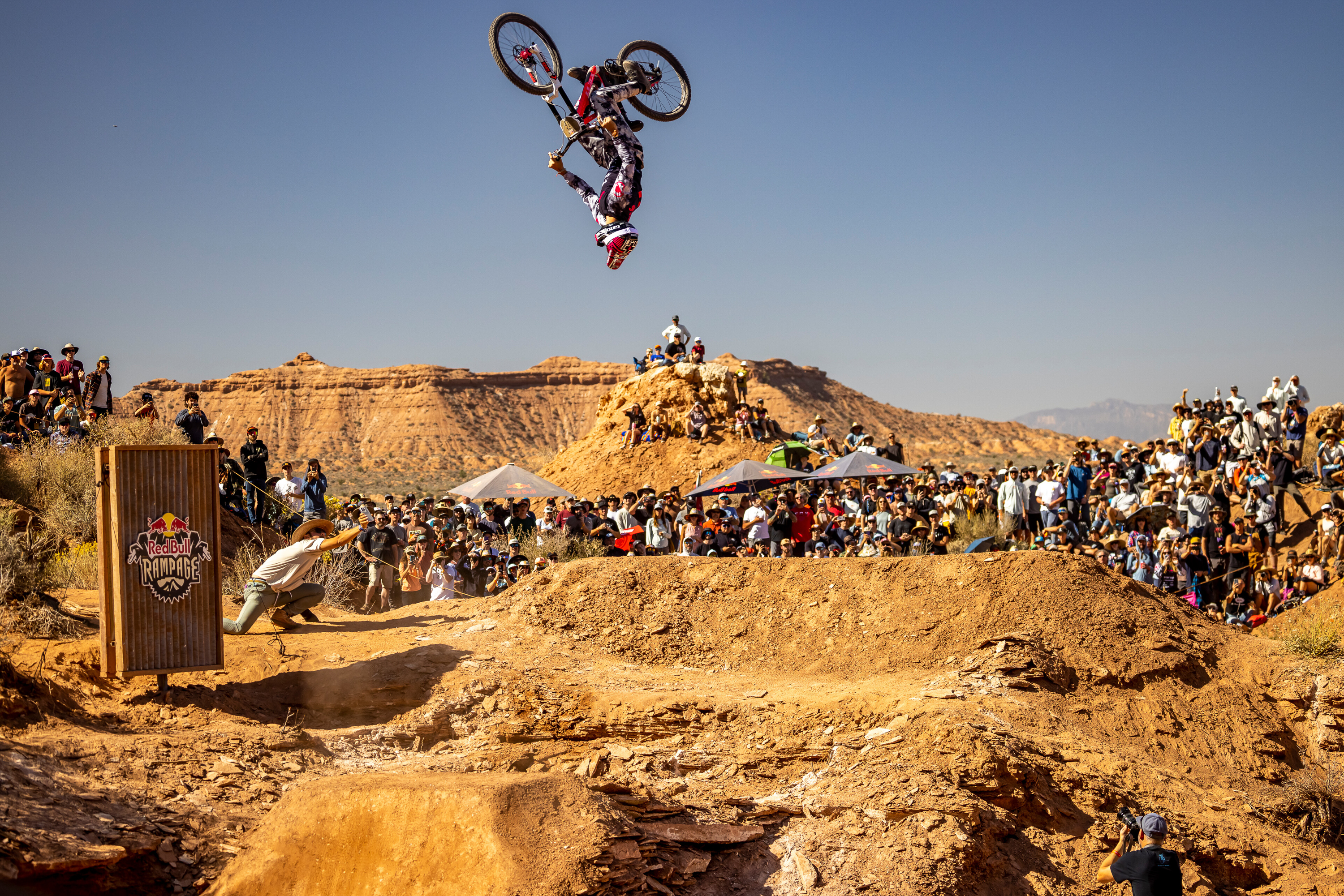After a few years of casual mountain biking, I decided it was time to go ‘full send,’ as they say. This season I’ve been testing Fuji’s new Outland 1.1, and the singletrack has never been better.
Let’s be clear: Until this spring, I didn’t claim to be a biker at all. I’m still not sure if I am. For years I’ve been into rock climbing, paddling, and fly fishing.
Riding a mountain bike was something I did occasionally on a rental bike in the Rocky Mountains. So I set out to find an affordable bike that could handle a little bit of everything Midwest mountain biking had to offer.

I’ve been riding the Outland 1.1 on Minnesota singletrack through the spring and summer. Though not always the most technical terrain, Minnesota provides a great mixture of flowy lines, punchy climbs, and just enough features to keep you on your toes.
In short: The Fuji Outland 29 1.1 is designed to be an entry-level, budget-friendly, do-it-all trail machine. And it is just that.
What to Look for in Your First Mountain Bike
Outdoor hobbies can be expensive. I remember going into an REI before my first camping trip and getting slapped in the face by sticker shock. So, I bought the cheapest cookset available.
That gear happened to be the heaviest, most bulky, and least useful gear for me in the long run. Eventually, that gear failed or I learned what gear I actually needed.
Then, I had to start replacing the items, which was more expensive overall. I was tempted to get a $400 mountain bike, but this time I was wise enough to resist. I gleaned some beta from my co-workers on what to look for in a “starter” bike, so I’ll pass on that wisdom on to you.

Capable. Bottom line, if you’re investing in a full-suspension bike, you want something that feels confident on the downhills but doesn’t fight against you on the climbs.
For the Midwest or modestly technical trails, look for something between 100 and 140mm travel up front with 80-120 mm in the rear. This will be a good middle ground that will handle a wide variety of trails from techy singletrack to easy flowy downhills.
Size. Bike fit can make all the difference in how a bike rides. Sizing is not universal, meaning you may be a small in one brand and a medium in another based on the frame geometry. Find a local demo and ride as many bikes as you can so you can get a feel for what size fits you best.
Type. Be honest with yourself on how you plan to use the bike. You may want a full downhill bike, but is that the type of riding you do most?
A short-travel, full-suspension bike does everything I need and doesn’t limit where I can ride too much. Decide what trails you’ll be riding and buy the bike most appropriate for those trails.
Price. You get what you pay for. Many of the “mountain” bikes on the market are not rated for actual trail riding and could fail off road.
If you’re looking for a short-travel, full-suspension bike, start with something between $1,500 and $2,200. This threshold ensures you get a trail-worthy bike that’s much less likely to explode underneath you.
Many manufacturers offer the same frame with different component specs. So you can start with a cheaper build and upgrade the components as they wear out or you have more room in your budget.
Durability. Again, you get what you pay for. If you’re not sure what to look for when it comes to reputable brands or models, stop in and talk to someone at your local bike shop. Shop employees are some of the biggest bike nerds out there and can help point you in the right direction.
Weight. While you may not be racing or counting grams, weight is still an important factor when it comes to the overall experience. You don’t need to look for the lightest bike on the market, but do look for something that feels balanced.
Fuji Outland 29 1.1 Mountain Bike Review
It’s blue and it’s fun to ride. But seriously, the fact that it looked cool made me excited about it from Day 1. For the first time, I chose to hit the trails instead of the crag. Who have I become?!
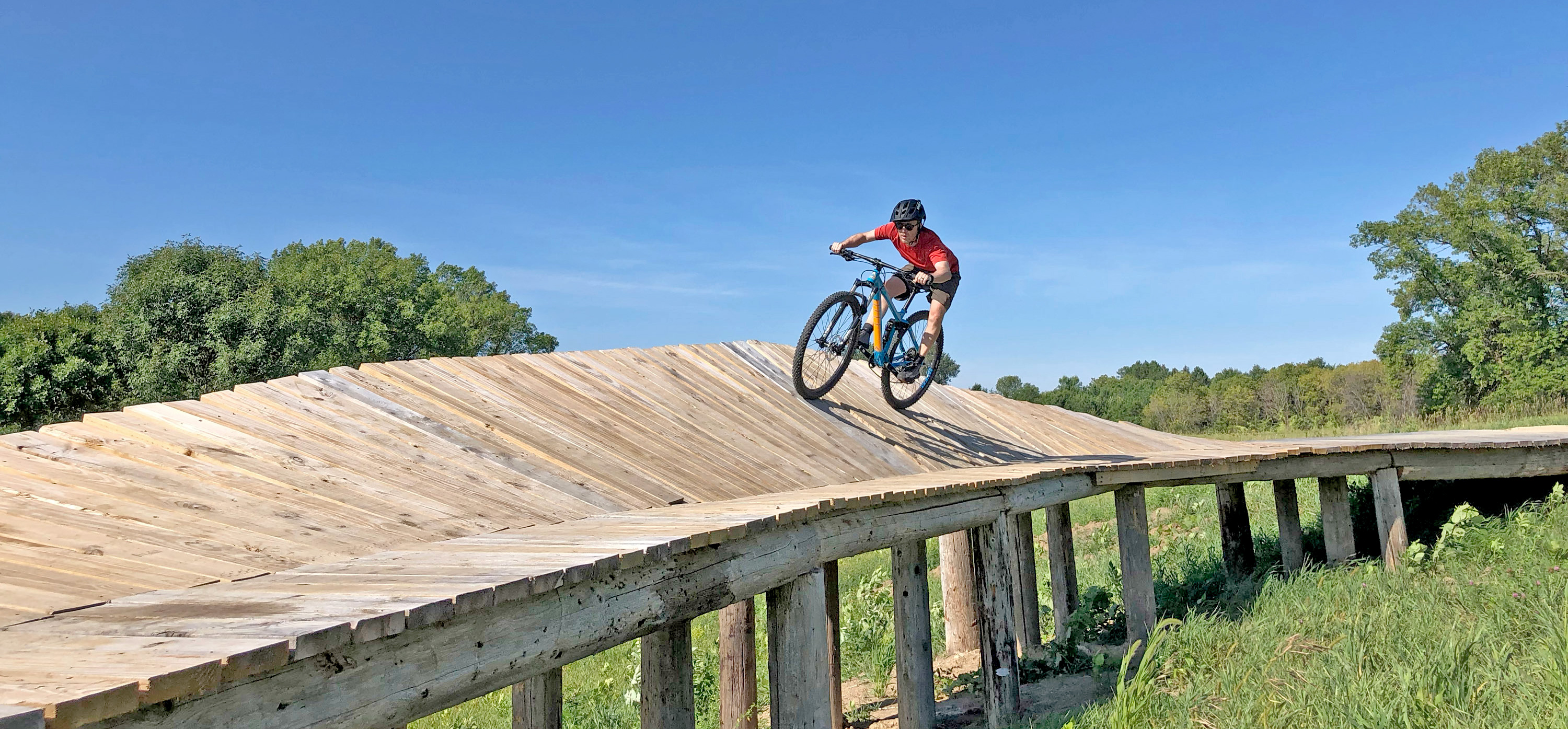
Beyond flashy looks, this bike performed well for me, and it helped build my confidence and test my limits. Fuji built this bike for those looking to get into the sport with a solid, full-suspension bike to shred on. I think they nailed it.
What You Get in Fuji’s Sub-$2,000 Mountain Bike
Overall, I liked the feel of the bike. I didn’t have to muscle it on tight corners and never felt like it was trying to buck me off during descents.
As my bike maven colleague Kurt would say, I felt like I was “in” the bike when riding it, not “on” it. I was generally pleased with the stock components on the Fuji Outland 1.1 considering the price and target market for the bike.
I can’t claim that I am — or that the bike is — a superfast climber. But it was easier than expected — and the first time I enjoyed climbing on a bike.
The 29-inch tires made rolling over roots and rocks a lot smoother and helped keep up momentum while climbing. The stock tires gripped well on a variety of trails, and I didn’t notice any loss of traction on ascents or descents.
The Outland 1.1 comes stock with a 1×10 Shimano drivetrain, which has a pretty wide range and allowed me to tackle all the switchbacks I could find with relative ease.
A 10-speed seems like an ancient gearing option, but for Midwest singletrack, it’s plenty adequate. And when I inevitably crash and break a shifter or derailleur, it’ll be much less expensive to replace if needed.

The RockShox Judy Silver TK 29 Solo Air fork and Deluxe RL rear shock handled the bumps, berms, rocks, and roots of Minnesota trails wonderfully. I felt stable and in control while rolling through all kinds of terrain and hitting small drops and jumps.
Both the front and rear shock lock out for climbs or flat trails. I didn’t notice much (if any) pedal bob on the bike when pedaling. The bike accelerates fairly quickly and holds speed on the trail. I didn’t have any problems with the Shimano M315 hydraulic disc brakes, which have pretty good modulation when braking.
The frame has internal cable routing, which keeps the lines of the bike clean. And the WTB wheels and tires come tubeless-ready, a nice bonus because not all bikes at this price offer this as a stock option.
I’m 5’3″ and tested a size small bike, and it fits well enough. I never felt cramped or stretched out while riding. Though, the 29-inch wheels made it feel like a big/tall bike, especially at first.
While geometry is super important, when it comes to how a bike will handle, I don’t have the experience to know exactly what I want yet. The Fuji sits comfortably between XC and all-mountain geometry and is suitable for a variety of terrain. And I never noticed any adverse ride characteristics.
Click here if you want to dive into the full specs.
What You’ll Yearn for on a Sub-$2,000 Mountain Bike
The old “pick two of three” adage applies to bikes. Light, strong, and cheap — you can only have two. You can get a light bike that will last a long time, but it won’t be cheap. Or, you can get a cheaper bike that will be strong, but it won’t be light.
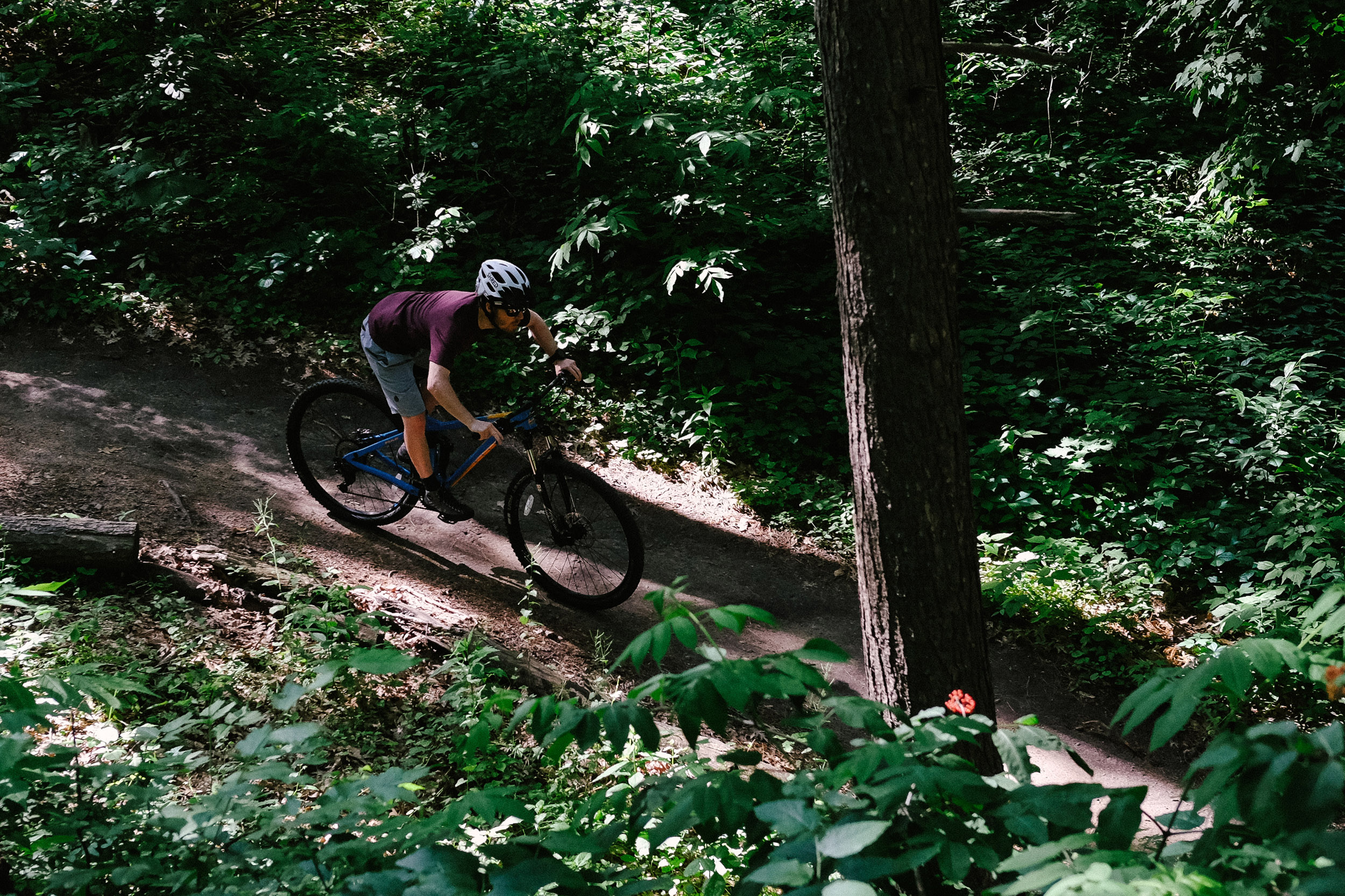
Though it seems like a fortune, $2,000 will only get you so far in the bike world. As with all bikes in this entry-level category, the Outland has a few drawbacks.
First is the weight. I tested a size small, which weighed 34 pounds. It’s heavy compared to other short-travel bikes out there. For $1,950, I don’t expect any carbon, but it’d be nice to swap out a few components to drop it below 30 pounds. A quick swap of the wheels and crank would net a few pounds that would pay quick dividends on the trail, but they’ll also take a big bite out of your wallet.
Fuji Outland 29 1.1 Mountain Bike
- Frame: A2-SL butted aluminum
- Fork: RockShox Judy Silver TK 29 Solo Air
- Rear shock: RockShox Deluxe RL
- Groupset: Shimano Deore, 10 speed
- Wheelset: WTB STP i25 32-hole rims; Formula boost hubs; tubeless ready
- Tires: Schwalbe Rocket Ron Performance, 29″ x 2.25″, tubeless compatible
- Brakeset: Shimano M315, hydraulic disc, 180/160mm rotors
- Cockpit, saddle, seatpost, handlebars: Oval concepts
- Boost spacing
- Full specs here
Second, the bike doesn’t come with a dropper post. Honestly, for my current locale, I don’t need it. But I’ll inevitably get into some steeper riding, and it’d be nice to drop the post easily when needed. It’s set up with internal routing to keep the lines clean and tidy when that time comes.
So far, the stock 10-speed drivetrain has been adequate, and I haven’t felt the need for the more popular 12-speed drivetrains on the market. That said, as I become a more serious rider, increasing my gear range might be one of the modifications I make to the bike.
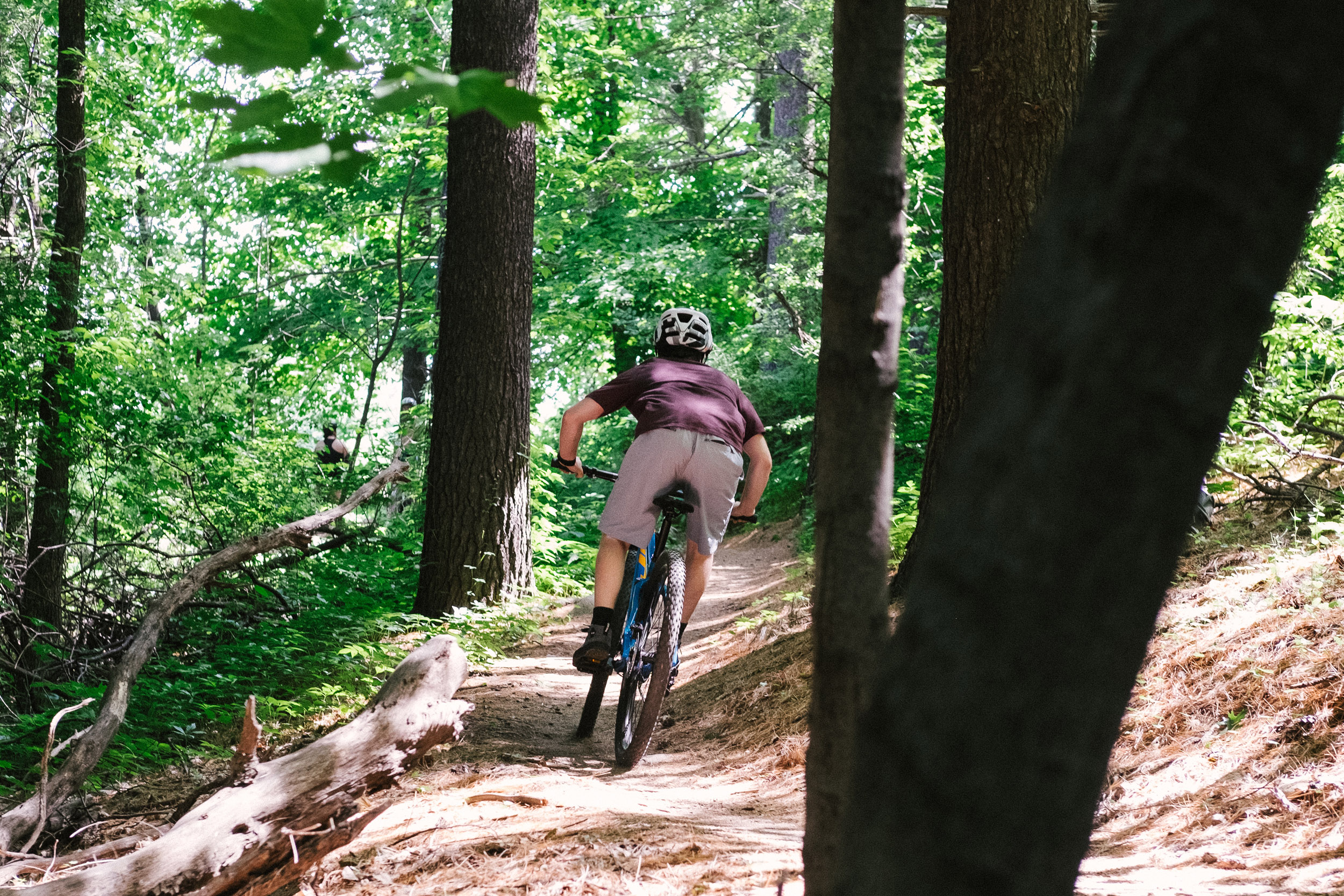
Final Thoughts
It’s still blue, it’s still fun to ride, and shredding singletrack on it was the highlight of my summer. If you’re looking for a full-suspension 29er to get serious about mountain biking, I’d recommend taking a look at Fuji’s Outland 29 1.1. It’s a great bike for under $2,000.


